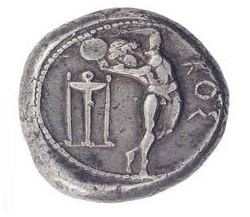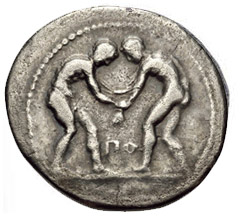
Ancient coins depictions
|
Numismatics is strictly connected with depiction of several scenes on both sides of the coins, most of them pointing out the source of their creation commonly related to their home country. Carvers were usually inspired by local culture including religious themes, mythological scenes, natural environment icons, statues or sports scenes. This lead coins being, apart from an exchange means, an information resource for the benefit of modern inspectors who come across various symbols and details through coins depictions. Carving the figure of the god who was considered to protect their city was very usual to ancient Greeks and the Olympian gods were usually accompanied by their emblems. For instance, Athenians chose the goddess Athena for their coins as their city had been named after her whose emblem was an owl, the wise bird. Coins cut in Ancient Olympia depict Zeus and Hera who were worshipped within that area. Apollo was depicted holding his lyre on the coins of Chalkidiki. |
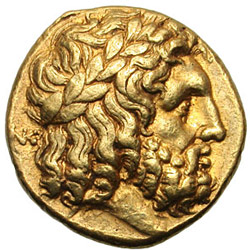
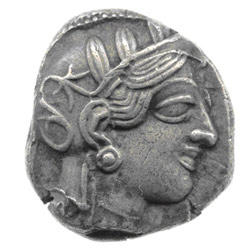
As far as mythology scenes are concerned, there was a kind of standardization so that everybody could recognize a mythological theme. For example, Hercules was depicted wearing a lion-skin cape after having killed the lion in Nemea. This was his first of the Twelve Labours commanded by King Eurystheus. The lion was very strong and no weapon could defeat it so Hercules killed it using only his own hands.
Pegasus and a Velerefondis, a hero from Corinth, are often depicted in coins. According to the myth, Athena offered Velerefondis a golden bridle with which the hero managed to capture Pegasus while the second was drinking water from Peirene fountain.
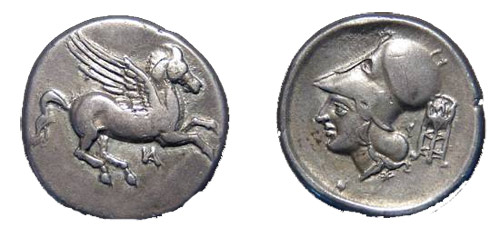
Knossos coins are of course related to the Labyrinth constructed by Daedalus.
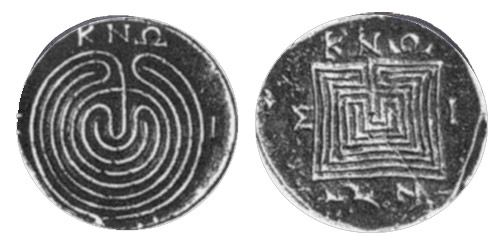
Themes derived from the natural surroundings of the ancient societies include several plants and animals kinds. For example, horses are depicted on the coins produced in the area of Thessaly where horses breeding was a very common business. Evoia island was rich in cows so they were often carved on local coins while those from Thrace depicted grapes thanks to the fact that locals used to deal with the production of wine. Fig leaves were carved on coins from Kameiros city, Rhodes island, as fig trees had grown in abundance on the island. What is more, sometimes the depictions were inspired by the name of a city just like those from Rhodes that depicted a rose.
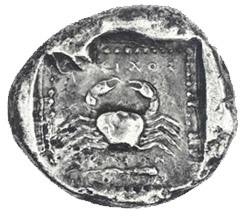
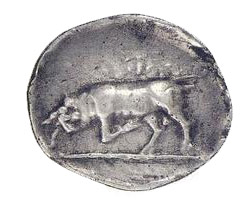
Ancient Greeks were fond of exercising and doing sports as they believed that athletics benefits both mind and body and was connected with young people's education. Thanks to the depiction of several sports on the coins, we are aware of sports that do not exist anymore, yet these sports were carried out during ancestry.
